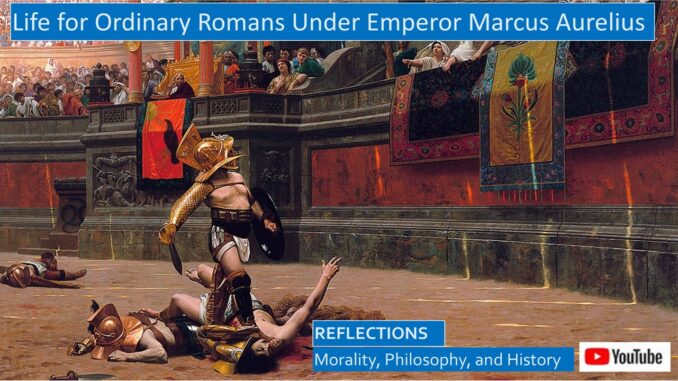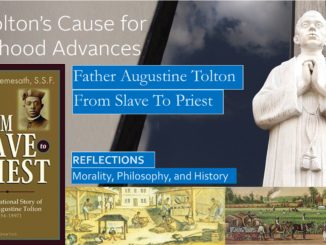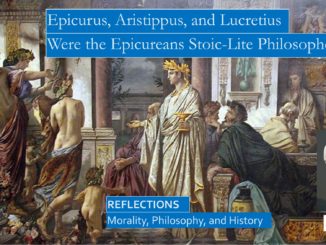
What can we learn from reflecting on the life of ordinary Romans during the time of Marcus Aurelius?
What was life like for the ordinary Roman? What was life on an ancient farm like? What was life in Rome like? How many people lived in ancient Rome?
How much of the population were slaves? What was life as a slave like? What were the social classes in Rome?
How and why did slavery transition to serfdom in the later Roman Empire?
What were Roman roads, aqueducts, travel, and banking like?
Powerpoint Script with Book Links:
https://www.slideshare.net/BruceStrom1/ordinary-life-for-romans-under-reign-of-stoic-emperor-marcus-aurelius
YouTube video for this blog: https://youtu.be/9hgSbcgbCJw
ORDINARY LIFE IN THE ANCIENT WORLD
The overwhelming majority of ancient people lived on farms in the country. Often these farmers retreated behind the city walls when an army marched through the countryside, the best example is how the Athenian farmers crowded behind the walls of Athens when the Spartans raided Attica. This led to overcrowding, which often meant that plague could strike the population during a siege, such as in Athens in the beginning of the Peloponnesian Wars.
Thucydides and Plutarch: Pericles and the Beginning of the Peloponnesian War Between Athens and Sparta
http://www.seekingvirtueandwisdom.com/thucydides-and-plutarch-pericles-and-the-beginning-of-the-peloponnesian-war-between-athens-and-sparta/
https://youtu.be/1ra58mg33nM
Quite often there were no nearby city walls where they could seek refuge. For example, Sparta had no city walls, and Plutarch in his sayings of Spartan women reveals that often Spartan women were seized and forced to be concubines when their city-states were conquered.
Spartan Women, Marriage, Family Life and Sayings, From Plutarch’s Life of Lycurgus
https://seekingvirtueandwisdom.com/spartan-women-marriage-family-life-and-sayings-from-plutarchs-life-of-lycurgus/
https://youtu.be/q8kgoaaeCLg
Professor Aldrete in his Wondrium lecture on the History of the Ancient World points out that the ancient historians and sources are silent on what life was like for the many farmers who labored in obscurity, that these ancient histories are really histories of political leaders and city dwellers. For every person who lived in the city in much of the ancient world, eight or nine lived on a family farm. The ratio differed around Rome, about a quarter of the people nearby lived in the city. Most people never traveled more than twenty miles from home, never saw a king, never read a book, or heard a philosopher speak. Most people living on farms did not even know the name of the Roman Emperor, and life went on as before no matter who was emperor.
The infant mortality rate in the ancient world was incredibly high: between a quarter and a third of infants died in their first year of life. If you survived to adolescence, you had a decent chance of surviving until middle age, though most people died before they were fifty. The diet of many ordinary people in the ancient world was just above a starvation diet. So many women died in childbirth that Roman wives often updated their wills when they learned they were pregnant.[1]
Ordinary Life and Justice in Ancient Athens, Rome, and Israel
http://www.seekingvirtueandwisdom.com/ordinary-life-and-justice-in-the-ancient-world/
https://youtu.be/vl8KGL5Yx2w
Even for wealthy families, infant mortality was high. For example, Marcus Aurelius married Faustina, daughter of his predecessor, Emperor Antoninus Pius, when he was twenty-four and she was fourteen, which was typical for the ancient world. She born him fifteen children, of whom only six survived to adulthood. In the end, only one son survived to be in the line of succession, the murderous Commodus.[2] Marcus Aurelius includes in his Meditations some fatalistic thoughts on how ancient parents can cope with this high mortality rate:
- “Pray not for some way to save your child, but for a way to lose your fear of this.
- Your children are like leaves. The wind scatters some of them on the ground; such are the children of men.
- As you kiss your son goodnight, whisper to yourself that he may be dead in the morning.”[3]
ORDINARY LIFE FOR ROMAN CITIZENS
In the ancient world, over half of the household budget for the lower classes was spent on food. To keep the citizenry of Rome from rebelling, the state guaranteed a dole of wheat for all male citizens, enough to feed an individual, but not enough to feed his entire family. The state owned the grain plantations in Northern Africa, which were likely slave plantations, consuming about fifteen percent of the state budget. Far more wheat was sold on the open market in Rome, about 85% of the wheat grown in North Africa. The Roman state also provided cheap wine for the masses, and erected public baths open to all classes of society, in addition to free entertainment at the arena, such as the famous gladiator contests.
There were both large and small farms in Italy, mostly raising vines, olives, and cereals, known as the Mediterranean triad, though some also grew dry legumes, such as broad beans, peas, chickpeas and lentils. Many farms raised livestock such as goats, sheep, cows, and pigs, particularly if they were near a town. Italy was arid, raining only sporadically the summer months, which meant that North Africa was the breadbasket of the Roman Empire, raising most of its grains.
What was farming like in ancient Rome? The historian Will Durant says that “the modes and tools of tillage were essentially as they had been for centuries. Plow, spade, hoe, pick, pitchfork, scythe, rake, had scarcely changed in three thousand years. Corn was ground in mills turned by water or by beasts. Screw pumps and water wheels raised water out of mines or into irrigation canals. Soils were protected by crop rotation, and fertilized by manure, alfalfa, clover, rye, or beans.” Olive orchards and grape vines were numerous, and fruit and nut trees of every sort from all over the empire were grown.
Will Durant continues, “a large part of Italy was given over to grazing. The cheapest soils and slaves could be used for the raising of cattle, sheep, and swine. Careful attention was paid to scientific breeding. Horses were bred chiefly for war, hunting, and sport, seldom as draft animals; oxen drew the plow and the cart, mules bore burdens on their backs. Cows, sheep, and goats gave three kinds of milk, from which the Italians made delectable cheeses.” There were small manufactures, about one in twenty were involved in the textile trade, plus there were also small brick, marble, pottery, and glass works.
FREE AND ENSLAVED POPULATION OF THE ROMAN EMPIRE
The Roman Empire was at its zenith when Trajan was emperor, it was about half the size of the United States, stretching from Iberian Spain to Parthian Persia, and from Egypt to England. During the reign of Emperor Marcus Aurelius, about twenty percent of the world’s population lived in the Roman Empire, about eighty million people, roughly the size of the Han Empire in distant China.
The city of Rome grew in size during the Roman Empire. Under Julius Caesar, Rome’s population was about 750,000; under Trajan, about a million; and under Emperor Antoninus Pius, predecessor of Marcus Aurelius, about 1,250,000. The slave population of the empire was between seven and ten million at the time of Marcus Aurelius, and about half a million, or about forty percent of the population of Rome were slaves. Many had been enslaved in conquests.
We had previously discussed the types of slaves in the ancient world, now we will discuss the types of slaves in Roman society around the time of Marcus Aurelius, from the least oppressive to slaves facing near-certain death.
Slaves in the Ancient World, Blog 1, Were Slaves the Employees of the Ancient World?
http://www.seekingvirtueandwisdom.com/slaves-in-the-ancient-world-blog-1-were-slaves-the-employees-of-the-ancient-world/
Slaves in Ancient Greece and Rome, Blog 2
http://www.seekingvirtueandwisdom.com/slaves-in-ancient-greece-and-rome-blog-2/
https://youtu.be/O67cmVRvBtA
Were household slaves, and slaves on small country farms, sometimes treated as part of the family, as they were in ancient Greece? Perhaps, we know they included educated Greek slaves who served as tutors for the aristocrats. Epitaphs on tombstones reveal that there could be affectionate relations between masters and slaves, Will Durant provides examples: “one owner says a dead servant was as dear to him as a son; a young noble mourns the death of his nurse; a learned lady raises an elegant memorial to her librarian.”[4]
The wealthier Romans had more household slaves than positions, sometimes they had literally hundreds of slaves, and as the historian McLynn notes: “a ludicrous division of labor arose: one slaves would buy groceries, another would cook, another put on his master’s shoes, another dress him, another massage him, and others follow him to attend to his every need.”
McLynn notes, “Roman slaves were often talented, clever and educated, occupying positions of responsibility and with a real prospect of freedom. Some slaves in large households had de facto control of great wealth, supervised other workers, both free and slave, and sometimes were themselves served by other slaves.” “Yet despite their managerial powers and often sumptuous lifestyle, they owned nothing legally and were subject to the arbitrary whim of their masters.” Other sources say that Roman slaves could own property, and if they were craftsmen were able to save up the portion of the earnings they were permitted to keep for themselves so they could buy their freedom.
The Roman slaves who had it worst were those who worked on the great plantations, or latifundiae, and the slaves who worked in the mines. These slaves were often kept in chains at night. The Romans typically did not slay the military age men in their conquests, as was done by many of the Greek city-states, they often sent them to work on these plantations. Mining was so dangerous in the ancient world that the slave who worked the mines were living under a virtual death sentence.
What were the other sources of slaves? Pirates historically sold their captives into slavery, but the early Roman Emperors vigorously opposed the pirate fleets, ridding the Mediterranean of the scourge of piracy.[5] Foundlings, or children abandoned in the marketplace by those too poor to properly raise them, were a major source of Roman slaves. This custom was not abandoned until 374 AD, during the reign of the Christian Emperors. Plus, many slaves were born into slavery.[6]
Manumission, or freeing of slaves, was common in the Roman Empire. One Stoic Philosopher, Epictetus, who inspired Marcus Aurelius, was himself a former slave of a former slave. Some former slaves, or freedmen, became quite wealthy in the early years of the Roman Empire.
But the Roman class distinctions never forgot that you were a former slave, or freedman. As a freedman, you still had residual obligations to your former master, as your former master was now your patron, and as a freedmen you were often part of his entourage.
Epictetus, Stoic Philosopher
http://www.seekingvirtueandwisdom.com/epictetus-discourses-blog-1/
http://www.seekingvirtueandwisdom.com/epictetus-discourses-blog-2/
https://youtu.be/Dhd543kov-E
The Old Testament prophets, the Jewish rabbis, the Stoic Philosophers, and the Christian Apostles and Church Fathers over the centuries gradually improved the lot of slaves and those in the lower classes. They urge us to ensure that we treat the poor and immigrants with fairness, ensuring they can live with security and dignity.
Teachings about Slavery in the Bible and by the Early Church Fathers
http://www.seekingvirtueandwisdom.com/teachings-about-slavery-in-the-bible-and-by-the-early-church-fathers/
https://youtu.be/poyvJajCXnE
SOCIAL CLASSES IN ROME OF MARCUS AURELIUS
Roman society was a traditional society where wealth was tied up in farms and land, and like the Greeks, the Roman aristocrats lived the lives of country gentlemen, disdaining having to work for a living, especially avoiding working as merchants. The senatorial class was drawn from the Roman aristocracy. Those Romans who were modestly wealthy were eligible to enter the equestrian class, who were also eligible to attend the senatorial sessions. Below them came the wealthy landowners, who were eligible to serve as jurymen. Below them were the professional classes, which included the freedmen, “the shop-owners, retail traders, money-changers, artisans, doctors, teachers,” and other professions and minor municipal officials. At the bottom are the wage earners earning very little, many of them may have lived lives more miserable life than many slaves.
There was a dramatic chasm between the wealthy aristocrats and the lower classes of laborers. The incomes of the landed aristocracy doubled or trebled in the first century, under the rule of the early Emperors, and increased about four times from 100 AD to 400 AD. Roman aristocrats were expected to live large, flouting their wealth. By the time of Marcus Aurelius, the fortune of the modestly wealthy averaged about twenty million sesterces, while the average wages were just four sesterces a day. This gap between rich and poor was much greater than even the gap in Victorian England.
Taxation was not heavy. There were no property taxes in Italy until the end of the third century, death duties were levied at five percent until the third century, and tribute was collected in the provinces at five or ten percent.[7]
TRANSITION FROM SLAVERY TO SERFDOM
Professor Kenneth Harl of Wondrium and Teaching Company notes that sometime between the decline of the Western Roman Empire and the Middle Ages that the primary labor system transitioned from slavery to serfdom, a process that is poorly documented for many regions of the Roman Empire.[8]
This process is better documented for Rome and Italy. After Hadrian and his successors consolidated the Empire, this meant that the Roman army would enslave far fewer conquered, though Marcus Aurelius did enslave many particularly hostile German tribesman. Marcus Aurelius had another more practical solution: he inducted defeated Germanic tribesmen into the Roman legions serving in other theaters of war, some of these soldiers served Rome faithfully. There was not a serious drop in the number of slaves in Rome until the reign of Marcus Aurelius, which was due to the severe manpower shortage caused by the plague.[9]
One consequence of the abandonment of wars of conquest meant that far fewer foreign captives were forced into slavery. Some owners of large estates responded by breaking some of them up into small holdings that they leased to free tenants who paid in rent and labor, this included many government estates.
ROMAN ROADS, AQUEDUCTS, SHIPS, TRAVEL AND BANKING
Will Durant discusses many amazing observations about Roman technology. The Romans are famous for their roads, their durability was because they are built in layers like today’s roads, with a base layer of sand, overlaid with four strata of masonry, including stones and concretes, topped by closely fitting stone slabs, with local variations in construction. But properly engineered modern roads are far superior, Roman roads lasted longer because ancient vehicles much lighter and much slower than modern vehicles. Roman bridges were often build on piles driven into the riverbed.
The road system was extensive, Italy alone had twelve thousand miles of paved roads, there were over fifty thousand miles of roads throughout the empire. Ships were numerous, powered by both sails and oars, some ships had three decks, some cargo ships could hold a thousand tons of freight, some passenger ships could carry six hundred passengers. But sailing was safest closest to shore, shipwrecks were common, we know St Paul was shipwrecked in Acts, sailing between November and March was especially hazardous. But piracy was eliminated early in the history of the Roman Empire.
Pliny thought that the Roman aqueducts were Rome’s greatest achievement, they carried water to homes and public buildings and gardens, with enough left over to fill artificial lakes to host staged water battles in the Coliseum. But they needed constant maintenance, they used lead pipes, and were out of service by the end of the Western Empire.
As trade was extensive, so was the banking system. As Will Durant tells us, “bankers were everywhere. They served as money-changers, accepted checking and savings accounts, issued traveler’s checks and bills of exchange, bought and sold real estate, placed investment and collected debts, and lent money to individuals and partnerships.” Interest rates varied from four percent under Augustus to twelve percent under Constantine. There were financial panics as today. But Dr Wikipedia posits that Roman bankers disappear from the historical record sometime after 260 AD, possibly due to currency debasement.[10]
Also, in succeeding videos, we will reflect on the Roman Emperors through the time of Marcus Aurelius, and beyond. We also reflect further on the biographies of Marcus Aurelius after our video some time ago on whether Marcus Aurelius was the friend or foe of Christians. We reflected on his Meditations, which paradoxically have troublesome references to Christians, as well extolling virtues which Christians find admirable. We are also going to reflect on the biography of Marcus Aurelius, and the Emperor Commodus, and we will also reflect on the history of Christian persecutions under these early Roman emperors.
DISCUSSING THE SOURCES
The modern historian Frank McLynn’s biography of Marcus Aurelius is over five hundred pages, about half of the pages are background information, including what life was like for ordinary Romans in the time of Marcus Aurelius. Although it is dated, written in 1944, Will Durant’s history, Caesar and Christ, has a chapter on what life was like for ordinary Romans, plus he is very quotable, an excellent writer.
[1] Gregory S Aldrete, History of the Ancient World: A Global Perspective, The Great Courses/Wondrium lectures, 2011, Lecture 1, Cities, Civilizations, and Sources
[2] Frank McLynn, Marcus Aurelius, A Life (Philadelphia, PA, Da Capo Press, 2009), p. 86, XX.
[3] Frank McLynn, Marcus Aurelius, A Life, p. 93, his footnotes include the references to the Meditations.
[4] Will Durant, The Story of Civilization, Volume 3, Caesar and Christ, (New York: Simon and Schuster, 1961, 1944), pp. 334-335.
[5] https://en.wikipedia.org/wiki/Cilician_pirates
[6] Frank McLynn, Marcus Aurelius, A Life, pp. 8-10.
[7] Frank McLynn, Marcus Aurelius, A Life, pp. 2-11 and Will Durant, Caesar and Christ, pp. 320-323.
[8] Harl, slaves to serfs
[9] Frank McLynn, Marcus Aurelius, A Life, p. 9.
[10] Will Durant, Caesar and Christ, pp. 320-332 and https://en.wikipedia.org/wiki/Roman_roads and https://en.wikipedia.org/wiki/Banking_in_ancient_Rome .




3 Trackbacks / Pingbacks